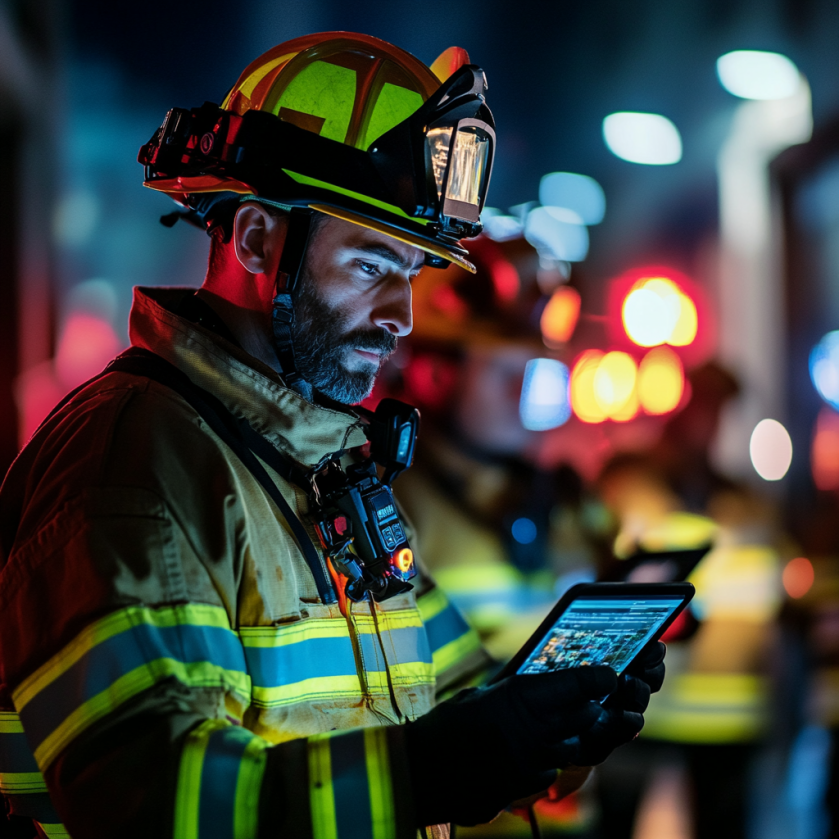When a fire safety crisis occurs, seconds count. An ineffective response can be the difference between a slight mishap and complete loss of life or property. That is why having round-the-clock access to a dependable fire protection service is more than necessary.
Organizations such as GMW Fire Protection do not only offer advanced systems but also the professional response needed when emergencies arise—day and night. This aspect is taking the reader behind the scenes of what it’s actually like to have a 24/7 emergency response, how expert staff ready themselves for the unexpected, and why professional knowledge counts in the case of fire safety emergencies.
1. The Reality of Fire Safety Emergencies
Fire emergencies are of all shapes and sizes—everything from activated alarms in domestic houses to sophisticated industrial situations in high-rise buildings. The classic examples are:
- Faulty sprinkler systems during winter weather
- Faulty alarm systems in offices
- Electric fires at home or in the office
- Equipment fires which need to be suppressed especially in industries
These accidents will not occur at such convenient hours. That’s why the anti-fire services need to be 24/7 with the equipment and trained personnel waiting to move in the moment they are called.
2. The Need for 24/7 Availability
While timely inspection or planned maintenance is desirable, emergencies are not time-sensitive. Fire can occur at midnight or in the early hours, and hours of waiting may be disastrous.
24/7 fire emergency response guarantee:
- Instant Response: Faster diagnosis to avert aggravation.
- Saving Property: Minimized damage by fire, water, and smoke due to timely intervention.
- Saving Life: Safeguarding occupants, personnel, and fire fighters.
- Peace of Mind: Homeowners and businesses can be sure that help is always at their fingertips.
Services such as GMW Fire Protection have round-the-clock readiness to make no customer feel vulnerable at any hour of the day or night.
3. In the Emergency Response Process
And what actually occurs when there is an emergency call? A trained fire protection service provider has a systematic but flexible process:
- Immediate Dispatch: A crew is sent out immediately after a call is made.
- Assessment: Technicians are being provided with information—nature of emergency, condition of equipment, nature of facility.
- Rapid On-Site Response: Crews come equipped with tools and parts required to make repairs.
- Containment & Repair: Whether leak containment in sprinkler systems or alarm resetting, the objective is the restoration of safety with all due speed.
- Follow-Up: Customers are counseled on how to avoid future occurrences after the emergency has been dealt with.
This system assists in attaining efficiency and reducing downtime in residential and commercial environments.
4. Experience’s Value in Responding to Emergencies
Not every fire safety company is equal. Emergency response involves technicians that are not only qualified but certified and experienced in responding to high-pressure emergencies.
Expertise matters because:
- Fire protection systems are advanced (sprinklers, alarms, suppression systems).
- Emergency installations are unsteady and sometimes hazardous.
- Split-second decision-making involved balancing safety, regulation, and expense.
Firms such as GMW Fire Protection spend money on training, technology, and on-call preparedness so that emergencies are handled right the first time.
5. Modern Fire Emergency Response Technology
Technology facilitates quicker, smarter emergency response. Technology in general use is:
- Remote Monitoring Systems: Identify system failure in real-time and alert responders.
- Mobile Dispatch Apps: Help dispatch technicians with full incident information on schedule.
- Diagnostic Tools: Detect hidden problems in alarms or fire suppression systems.
- Communication Tech: Alerts clients in real-time in case of emergencies.
With human intelligence and cutting-edge technology, fire safety providers can respond to emergencies with haste and accuracy never imagined before.
6. Common Problems in Fire Safety Emergencies
Emergency 24/7 response has some unique challenges:
- Severe weather conditions that may impair travel or equipment maintenance.
- Hard-to-reach areas of restricted accessibility.
- Aged infrastructure posing unforeseen danger.
- Emergency unfolding that demands multiple teams at once.
Preparation, flexibility, and strong systems enable pros to overcome the odds and provide quality service.
7. Why 24/7 Emergency Response Instills Confidence
Homeowners and business owners are safe and confident that professionals are always on call. It’s a reminder that fire safety is not just prevention, but response and resilience too.
When crises are dealt with promptly and professionally:
- Businesses sidestep costly down time and money loss.
- Homes are protected in their buildings.
- Neighborhoods understand safety gear gets the job done.
- That sense of security is priceless—and it is what 24/7 providers strive to provide.
8. Future-Proofing Fire Safety Emergencies
Spaces and technology are changing, and fire safety service providers are changing along with them. The future of emergency response will probably involve:
- AI-Powered Monitoring Systems which predict collapse before it occurs.
- Drone Assistance to quickly scan large buildings in case of fire.
- Smart Suppression Systems capable of adjusting in real time according to precise threats.
Companies which keep ahead of the curve in these trends will be most likely to seal communities.
Conclusion
Emergency does not wait for a clock, and in the fire safety business, time keeps no one waiting. 24/7 emergency response service means lives, property, and business are protected minute by minute, hour by hour, and day by day.
By means of expertise, technology, and commitment, businesses such as GMW Fire Protection are a beacon of what it takes to be a partner of choice in safety. Their attentiveness at all times demonstrates that fire protection is more than an activity—it is an assurance of safeguarding lives at the times they need it the most.
For the average reader, the message is clear as a bell: authentic fire safety is not prevention. It’s preparedness for the unprepared, with professionals waiting ready to respond—wherever, whenever.
